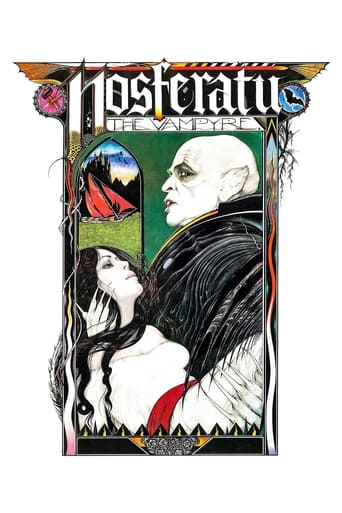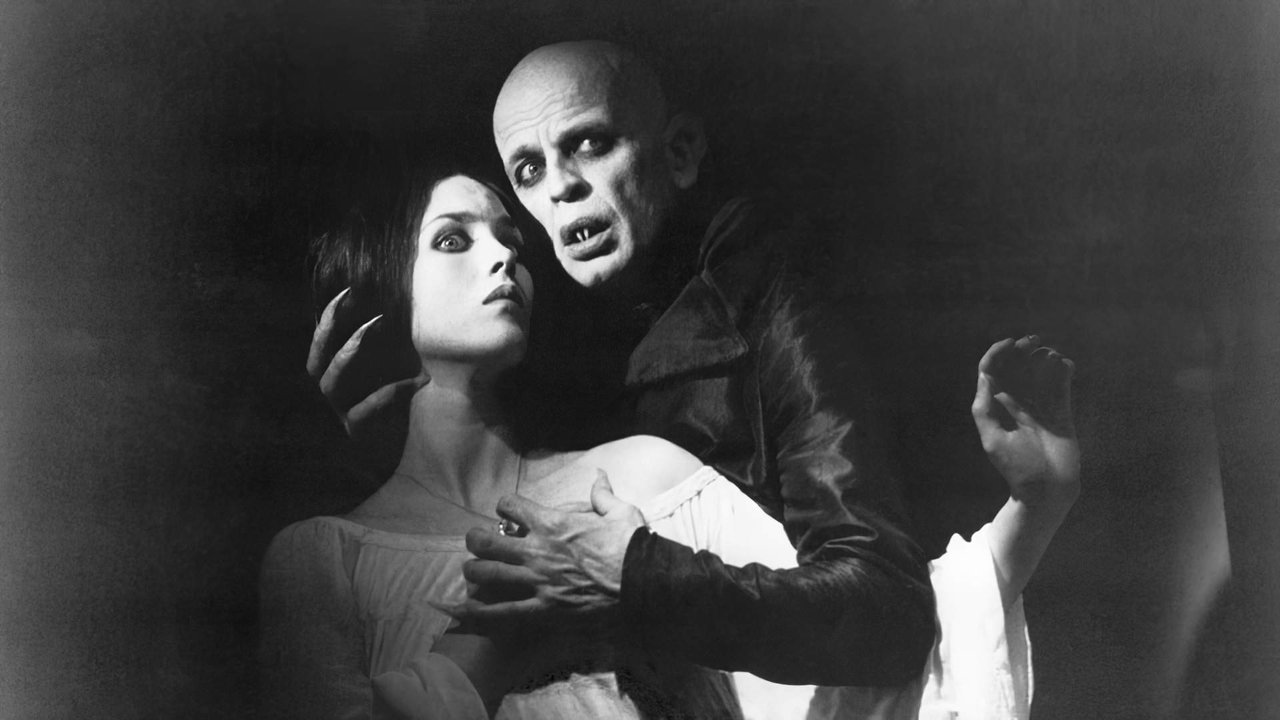avik-basu1889
On many occasions, Werner Herzog has said that according to him, F.W. Murnau's 'Nosferatu, a Symphony of Horror' from 1922 is the greatest German film ever made. So when he decided to make a remake of the aforementioned film in 1979, it was out of respect for the original. When someone watches Herzog's 'Nosferatu the Vampyre', you can clearly see that Herzog is certainly paying an homage to Murnau. The basic plot is loosely the same. There are some shots in the film that are composed and framed exactly like the original. However, having said that, 'Nosferatu the Vampyre' is also a Werner Herzog film through and through. One can feel Herzog's presence in every scene of the film.Murnau himself had changed the plot a whole lot from the book to make his film. He had introduced the plague element which was not present in the book, he had introduced the sacrificial element in the story that marks the end of the original film. Now Herzog borrows of a lot of these changes that Murnau brought in, but he also expands on them. He puts his own touch to every aspect of the film. Herzog also brought in a few changes on his own mostly through the style of direction and storytelling. The character of Nosferatu played by Max Schreck in the original silent film is like a creepy insect. But Nosferatu in Herzog's film exudes a sense of sadness, a sense of loneliness, a sense of pain. He is still creepy and scary when he needs to be. The connection between the arrival of the vampire and arrival of the plague can be seen to be metaphoric, just like in the original film. But the way Herzog treats this angle of the plague in the film is nothing short of genius. The way he shoots the rats, the way he choreographs and composes the scenes which depict the effect of the plague on the people in the city is nothing short of sublime. Herzog also introduces his own element of a form of PTSD in the plot of the film. Jonathan completely undergoes a change and a transformation after going into the heart of darkness and on returning, he ceases to remain what he used to be.Herzog has said that one of his primary intentions while making the film was to create a surreal, 'separate reality' as he thought a vampire film can't be made by firmly grounding it in reality. Not only do I agree with his opinion, but I also feel he managed to completely execute what he set out to. Herzog has always had the DNA of a documentary filmmaker in his blood. He can't help but capture nature in all its glory as well as in all its darkness. About 10 minutes of our time in the film is spent accompanying Jonathan as he makes the journey to Count Dracula's castle. Herzog takes his time to show us the gradual shift in the nature of the environment from beautiful greenery to creepy and grim darkness as Jonathan moves closer and closer to Dracula's castle. The shot composition and visual framing in the film is second to none. I can talk about so many shots that completely blew me away like the shot where Nosferatu walks towards the camera in a dark tunnel and then the blue light falls on his face or the uninterrupted shot where the ship with Nosferatu and the rats arrives at the dock or the overhead shot of the coffins being carried away in a line or the shot where the camera captures the horse drawn carriage as it moves ahead with its reflection falling in the water body right next to the path on which it is moving,etc. Herzog masterfully uses the hypnotic music provided by Popol Vuh to elevate a lot of the scenes to the ultimate heights of surrealism. There is also the usage of some classical music from time to time. There is a sort of a montage towards the last third of the film where Herzog visually shows us the effect of the plague on the spirit of the people in this town by only using Popol Vuh's music and that sequence is one of the most overwhelming and beautiful sequences that I have ever seen in any film.Klaus Kinski is pretty much flawless as Nosferatu. As soon as he appears, one can see the pain, the sadness in his eyes. His line delivery is precise. His body movements are peculiar and totally sell his non-human physical nature. When Kinski delivers the lines regarding Nosferatu's sadness about having to live on endlessly without being loved by anyone, without being accepted by anyone, I felt for him. I never felt anything emotionally for Schreck's Nosferatu. Isabelle Adjani is gorgeous, but somehow she can also make her face look scary and her over-the-top performance was clearly an homage to the silent era. She shifts from one emotion to another effortlessly. Bruno Ganz underplays the role of Harker. He remains subtle, but comes into his own and shows his acting skills in the second half of the film.Before 'Nosferatu the Vampyre', the other Herzog films that I had watched are 'The Enigma of Kaspar Hauser' which I really liked and 'Aguirre, the Wrath of God' which I think is another masterpiece. 'Nosferatu the Vampyre' has a bit of a link with 'Aguirre, the Wrath of God' as both films involve human beings venturing into areas of darkness that they are unfamiliar with and they end up becoming a shadow of their former selves as a consequence. I am slowly falling in love with Herzog's hypnotic style of storytelling which involves making full use of music, the presence of nature and verbal silence. Herzog is slowly climbing up my list of favourite filmmakers of all time.
jacobjohntaylor1
This a remake of Dracula. And it very disappointing movie. 1922 version of Nosferatu is very scary movie. It is one of the scariest movie ever made. And this is not scary at all. Nosferatu 1922 is a remake. Because there was a movie based on Dracula in 1921 called Dracula. I have never seen this movie. I am told it is lost. Nosferatu (1922) is such a good movie I don't know if the original Dracula could be better. I can believe that is it is better then crap. It is badly written and has an awful ending. You have to be under 7 to really get scared of this movie. Which it disappointing considering that the 1922 version is one of the scariest movies ever made. Do not see this movie. See the 1922 version. This movie is a wast of time and money.
Nigel P
The original 'Nosferatu (1922)' remains one of the greatest early films. However, possibly feeling that some aficionados might be put off by the understandably scratchy quality, German director Werner Herzog set about recreating the atmosphere original.For the pivotal character of Dracula, or Count Orlok, Herzog cast his friend, the mighty Klaus Kinski, who brings an incredible haunted intensity to a role that seemed to be made for him. Whether staring longingly at Harker's bleeding hand, or his bride Lucy, or snapping into inhuman speed due to his blood-lust, Kinski shines like a beacon in every single scene. It truly is an unearthly performance, he is probably the creepiest vampire of them all.There were two versions shot of this; an English and a German version. Perhaps because English is not the actors' native tongue, only Kinski emerges with a believable performance. Other members of the cast do well to sustain the slightly 'removed' atmosphere vital to such a dreamlike horror, but the acting does occasionally stray into wooden territory.And yet everything else is wonderfully ethereal. Harker's journey, Dracula's arrival by boat at the Varna seaport, the infestation of plague rats, the vibrant but desolate town, the choice of location and architecture
all these things come together to make a truly spooky film. Happily, the ending doesn't strive to placate the viewer, as Harker – one of the few survivors of the story – begins to look a little unwell.
ath_steph_3000
Along with "Fitzcarraldo", Werner Herzog's "Nosferatu" is probably one of his best movies in co-operation with the charismatic acting legend Klaus Kinsky, who convinces and stuns the audience in his role as a bloody and lonesome vampire from Transylvania. Those who know Murnau's original from 1922 will notice that Herzog's version is almost identical concerning storyline, settings, characters and the plot. Only cuts and dialogs are quite different, apart from a few scenes which had been added at the ending. One aspect typical of Herzog's movies is the scenery and wildlife cuts that he includes - this somehow imparts a nostalgic image that matches perfectly with the melancholic scenery of Germany and Romania. A brilliant entertainment for vampire- and Herzog fans alike.


 AD
AD






